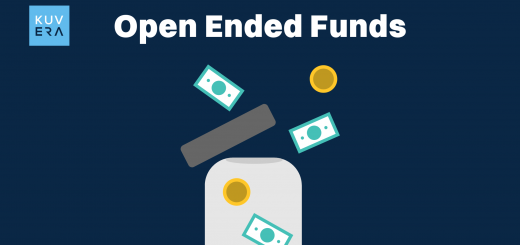Tax planning is an essential aspect of financial planning and management that often gets postponed until the last minute. Many taxpayers scramble to make last-minute investments in March to save on taxes, leading to hasty decisions and potential financial mistakes. Starting your tax-saving investments early in the financial year not only ensures peace of mind but also helps you make informed and strategic choices that align with your financial goals.
Following are the reasons for knowing why you should start tax planning early:
1. Structured Planning
Early planning gives you ample time to assess your financial situation and create a well-structured plan. By distributing your investments throughout the year, you can avoid the financial burden of making large investments in one go.
2. Wider Range of Investment Options
When you start early, you have a wider range of investment options to explore, including those that require long-term commitment. You can choose tax-saving instruments based on their returns, risks, and lock-in periods without rushing into suboptimal choices.
3. Compounding Benefits
Starting early allows your investments more time to grow and benefit from the power of compounding, especially for equity-linked savings schemes (ELSS) and Public Provident Fund (PPF). Compounding can significantly boost your wealth over time.
4. Avoiding Last-Minute Mistakes
Last-minute investments often lead to mistakes such as choosing low-return options, missing important documentation, or falling for misleading schemes. Early planning helps avoid such pitfalls.
5. Tax-Efficient Portfolio Building
By planning in advance, you can create a tax-efficient portfolio that aligns with your risk tolerance and long-term objectives. A well-diversified portfolio can optimise returns while minimising tax liability.
Popular Tax-Saving Investment Options
Several investment avenues provide tax benefits under various sections of the Income Tax Act, 1961 if you choose old tax regime. Some of the most popular options include:
1. Equity-Linked Savings Scheme (ELSS)
- Tax Benefit: Deduction under Section 80C up to ₹1.5 lakh.
- Lock-in Period: 3 years.
- Returns: Market-linked, historically higher than other tax-saving options.
- Suitability: Ideal for investors with a higher risk appetite seeking wealth creation.
2. Public Provident Fund (PPF)
- Tax Benefit: Deduction under Section 80C, and tax-free maturity amount.
- Lock-in Period: 15 years (with partial withdrawals allowed after 6 years).
- Returns: Government-backed, currently around 7-8% p.a.
- Suitability: Best for risk-averse investors looking for guaranteed returns.
3. National Pension System (NPS)
Tax Benefit: Deduction under Section 80CCD(1B) up to ₹50,000 in addition to 80C.
Lock-in Period: Till retirement.
Returns: Market-linked, offering exposure to equities, debt, and government securities.
Suitability: Ideal for retirement planning with additional tax benefits.
4. Employees’ Provident Fund (EPF)
Tax Benefit: Deduction under Section 80C.
Lock-in Period: Till retirement (partial withdrawals allowed under specific conditions).
Returns: Government-backed, currently around 8% p.a.
Suitability: Suitable for salaried individuals.
5. Tax-Saving Fixed Deposits (FDs)
Tax Benefit: Deduction under Section 80C.
Lock-in Period: 5 years.
Returns: Fixed, typically around 6-7% p.a.
Suitability: Ideal for risk-averse investors seeking fixed returns.
6. Sukanya Samriddhi Yojana (SSY)
Tax Benefit: Deduction under Section 80C.
Lock-in Period: Till the girl child turns 21.
Returns: Government-backed, around 7.6% p.a.
Suitability: Best for parents of girl children looking to secure their future.
7. Unit-Linked Insurance Plans (ULIPs)
Tax Benefit: Deduction under Section 80C.
Lock-in Period: 5 years.
Returns: Market-linked, combining insurance and investment.
Suitability: Suitable for those looking for dual benefits.
8. National Savings Certificate (NSC)
Tax Benefit: Deduction under Section 80C.
Lock-in Period: 5 years.
Returns: reviewed and guaranteed quarterly by government, currently around 7.7% p.a.
Suitability: Low-risk option for conservative investors.
Apart from Section 80C, the Income Tax Act provides deductions under other sections, including:
- Section 80D: Deduction for medical insurance premiums (up to ₹50,000 for senior citizens).
- Section 80E: Deduction for interest on education loans (no upper limit).
- Section 80G: Deduction for donations to charitable institutions (50% or 100% depending on the fund).
- Section 80GG: Deduction for house rent paid.
- Section 80TTA: Deduction for interest on savings accounts (up to ₹10,000).
- Section 80TTB: Deduction for interest on deposits for senior citizens (up to ₹50,000).
- Section 80U: Deduction for persons with disabilities (up to ₹1,25,000 for severe disability).
- Section 80DDB: Deduction for medical treatment of specified diseases (up to ₹1,00,000 for senior citizens).
- Section 80GGC: Deduction for contributions to political parties.
Proper documentation and adherence to the specified conditions under each section are essential to claim these deductions. For the latest updates, refer to the official Income Tax Department resources or consult a tax professional.
With the above Steps to Start Tax Planning Now
1. Assess Your Tax Liability
Determine your total income and potential tax liability to estimate how much you need to invest to maximise deductions.
2. Set Clear Financial Goals
Define your short-term and long-term financial goals to align your investments accordingly. Whether it’s wealth creation, retirement planning, or child education, tax-saving instruments should fit into your broader financial plan.
3. Diversify Your Investments
Choose a mix of tax-saving options to balance risk and returns. A diversified portfolio including ELSS, PPF, and NPS can provide both growth and stability.
4. Automate Your Investments
Setting up systematic investment plans (SIPs) for tax-saving mutual funds (ELSS) can help you invest consistently without a financial burden.
5. Stay Updated with Tax Laws
Tax regulations may change annually, affecting deductions and benefits. Staying informed helps you make the best investment decisions.
6. Consult a Financial Advisor
If you’re unsure about the best options, seeking advice from a financial planner can provide personalised recommendations based on your financial profile.
Common Mistakes to Avoid

Wrapping Up
Early tax planning enables structured financial management, offers diverse investment options, and leverages the benefits of compounding. It helps avoid last-minute errors and ensures the creation of a tax-efficient portfolio aligned with long-term goals. Various tax-saving instruments such as ELSS, PPF, NPS, EPF, Tax-Saving FDs, SSY, ULIPs, and NSC provide unique benefits based on individual financial objectives and risk tolerance. To start, assess tax liability, set clear financial goals, diversify investments, automate contributions, stay updated with tax laws, and consult a financial advisor. Avoiding common mistakes like procrastination, neglecting risk tolerance, focusing only on tax savings, and failing to review investments leads to better financial planning and tax efficiency. Hence, Don’t wait for March; take control of your tax planning today and make the most of the available opportunities to secure your financial future.
Interested in how we think about the markets?
Read more: Zen And The Art Of Investing
Watch here: Rebalancing for Mutual Fund Investors












